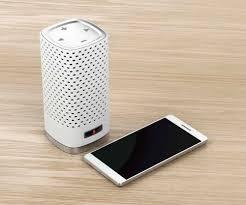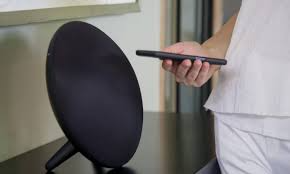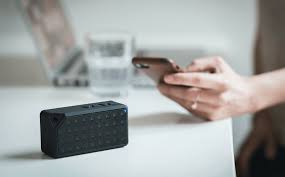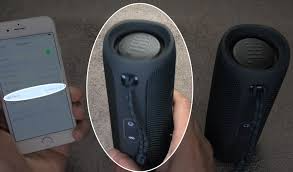Introduction
Enhance Your Audio Experience with Dual Bluetooth Connectivity
In a world where music and audio play an integral part in our daily lives, the ability to connect multiple speakers to your iPhone can significantly amplify your listening experience. Whether you’re hosting a party, creating an immersive home theater setup, or simply desiring stereo sound throughout your living space, pairing two Bluetooth speakers with your iPhone is a nifty trick that many users don’t know they can do. This detailed guide will walk you through every step of connecting your iPhone to two Bluetooth speakers, ensuring a seamless and powerful audio output.
Understanding Bluetooth Multipoint
The Key to Connecting Multiple Devices
Bluetooth multipoint technology allows one device, like your iPhone, to pair and maintain a connection with more than one other Bluetooth device simultaneously. Unfortunately, not all Bluetooth speakers support this feature. However, for those that do, it enables you to stream audio to both speakers at once for true stereo separation or to spread sound across different areas. If your speakers don’t have multipoint functionality, there are alternative methods to achieve dual connectivity which we’ll explore later in this article.
Step 1: Check Speaker Compatibility
Ensuring Both Speakers Support Multipoint
The first step is to verify whether your Bluetooth speakers are compatible with multipoint connections. You can typically find this information in the product specifications, user manual, or by contacting the manufacturer. Some premium brands offer speakers explicitly designed for dual or multi-channel audio streaming from a single source.
Step 2: Pairing Your First Bluetooth Speaker
Establishing the Primary Connection
To begin, turn on Bluetooth on your iPhone by going to Settings > Bluetooth and make sure it’s set to “Visible”. Then, power on your first Bluetooth speaker and put it into pairing mode. Once it appears in the list of available devices on your iPhone, tap to pair them.
After successfully pairing, test the audio to ensure the connection is stable and audio quality meets your expectations.
Step 3: Pairing Your Second Bluetooth Speaker
Adding a Secondary Speaker
With the primary speaker connected, proceed to pair the second speaker in the same manner. Put it into pairing mode and scan for it on your iPhone. If your speakers support multipoint, your iPhone should be able to detect and connect to both without disconnecting the first one.
If your iPhone doesn’t automatically connect both speakers, check the speaker’s settings or app (if applicable) to see if there’s an option for dual or stereo pairing.

Alternative Method: Using Third-Party Apps
When Multipoint Isn’t Available
If your Bluetooth speakers do not support multipoint connectivity, fear not; there are alternative methods to connect and play audio through two or more speakers simultaneously from your iPhone. Here’s a detailed breakdown:
Method 1: Using Third-Party Apps for Synced Playback
Several apps on the App Store can help you overcome the limitation of single-point Bluetooth pairing. Apps like AmpMe, SoundSeeder, or SpeakerBlast use Wi-Fi instead of Bluetooth to synchronize audio across multiple devices.
AmpMe: This app allows you to connect numerous devices (including Bluetooth speakers) over Wi-Fi and syncs them to play music in unison. It also works with Spotify, Apple Music, and other popular streaming services. Simply install the app, connect your speakers to the same Wi-Fi network as your iPhone, and let AmpMe handle the rest.
SoundSeeder: Similarly, SoundSeeder turns your devices into a wireless multiroom sound system. It connects via Wi-Fi Direct or Chromecast, creating a virtual sound system where each speaker plays a different channel of the stereo mix, providing an immersive experience.
SpeakerBlast: This app is designed to stream audio from your iPhone to multiple Bluetooth speakers at once. While it doesn’t provide true stereo separation, it does allow for a wider coverage area for your audio.
Method 2: Auxiliary Cables or RCA Connections
If you have speakers with auxiliary inputs or RCA ports, you can utilize a Bluetooth receiver for each speaker. Pair your iPhone with one Bluetooth receiver, then connect the output of that receiver to the input of another Bluetooth receiver (or directly to the second speaker if it has an auxiliary input). This method creates a daisy chain effect but may introduce a slight delay between the two speakers due to the analog signal transfer.
Method 3: Multi-room Systems
Investing in a multi-room audio system like Sonos, Bose SoundTouch, or Apple’s HomePod Mini can streamline this process. These systems are designed to work together seamlessly and often include dedicated apps that allow you to control which rooms or speakers receive audio from your iPhone.
In summary, while native multipoint Bluetooth connectivity might not be available on all speakers, several creative solutions enable you to enjoy synchronized playback across multiple speakers from your iPhone. Always consider the limitations and potential latency issues when choosing an alternative method, and don’t forget to check for compatibility with your existing devices and services.

Conclusion & Tips for Optimal Performance
Getting the Most Out of Your Dual Speaker Setup
Utilizing a dual speaker setup can greatly enhance your audio experience, whether for music playback, watching movies, or gaming. Here are some tips to get the most out of your two-speaker configuration:
1. Stereo Placement
- Correct Positioning: For optimal stereo separation and soundstage, place your speakers at an equal distance from the listening position and angle them toward the listener in what’s known as the “triangle” setup. This generally involves positioning each speaker at a 60-degree angle relative to your central listening position.
- Height Considerations: If possible, keep both speakers at ear level when seated. This ensures that the high, mid, and low frequencies reach your ears evenly.
2. Speaker Configuration
- True Stereo Pairing: If your speakers support it, set them up in true stereo mode where each speaker plays a distinct left or right channel. This will create a wider soundstage and more immersive experience.
- Multipoint Connectivity: Utilize multipoint Bluetooth pairing if available on your speakers, allowing you to connect both speakers directly to your audio source (like an iPhone) for synchronized audio output.

3. Equalization (EQ)
- Custom EQ Settings: Many devices and apps allow you to adjust the EQ settings. Tailor the frequency response to suit the room acoustics and your personal preferences. This can be especially helpful for balancing bass, mids, and treble across the two speakers.
- Room Acoustic Treatment: While not directly related to the speakers themselves, consider acoustic treatments like bass traps and diffusers to improve sound quality within the listening environment.
4. Cabling
- High-Quality Cables: Use high-quality cables with gold-plated connectors for better signal transfer. If using wired speakers, ensure the cables are long enough to facilitate proper placement without causing strain or damage.
5. Audio Sources and Formats
- High-Resolution Audio: Stream or play high-resolution audio files whenever possible. These offer better dynamic range and clarity than compressed formats.
- Multi-channel Content: Choose audio content that is specifically mixed for stereo playback to fully enjoy the benefits of your dual speaker setup.
6. Speaker Calibration
- Auto-Calibration Systems: Some higher-end speaker systems come with auto-calibration software that adjusts the output based on the speakers’ positions in the room. If yours has this feature, use it to optimize performance.
- Manual Tweaking: Listen critically and make manual adjustments until you achieve a balanced and natural sound across all frequencies and throughout the room.
By implementing these strategies, you’ll elevate your dual speaker setup to its full potential, creating a rich, engaging soundscape that brings your music, movies, and games to life.